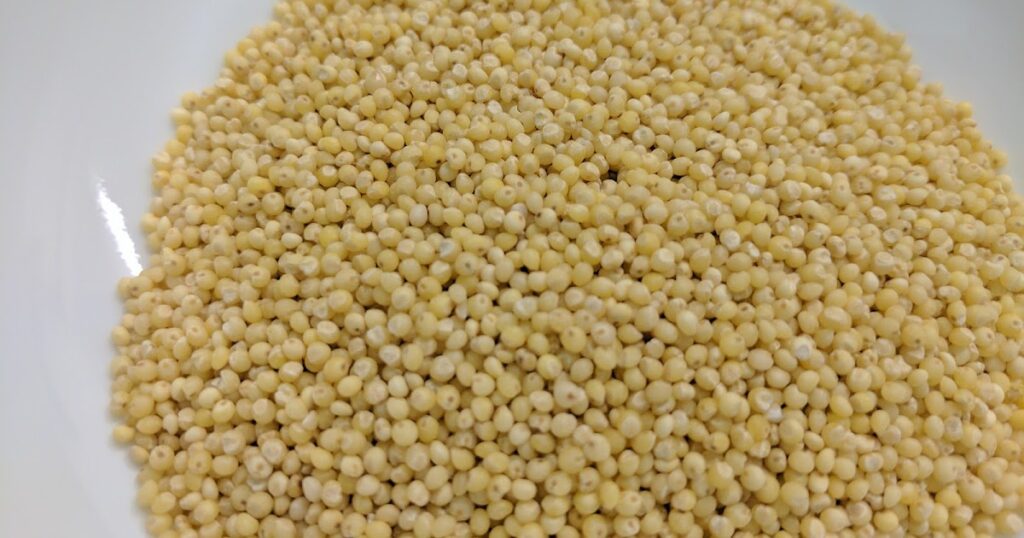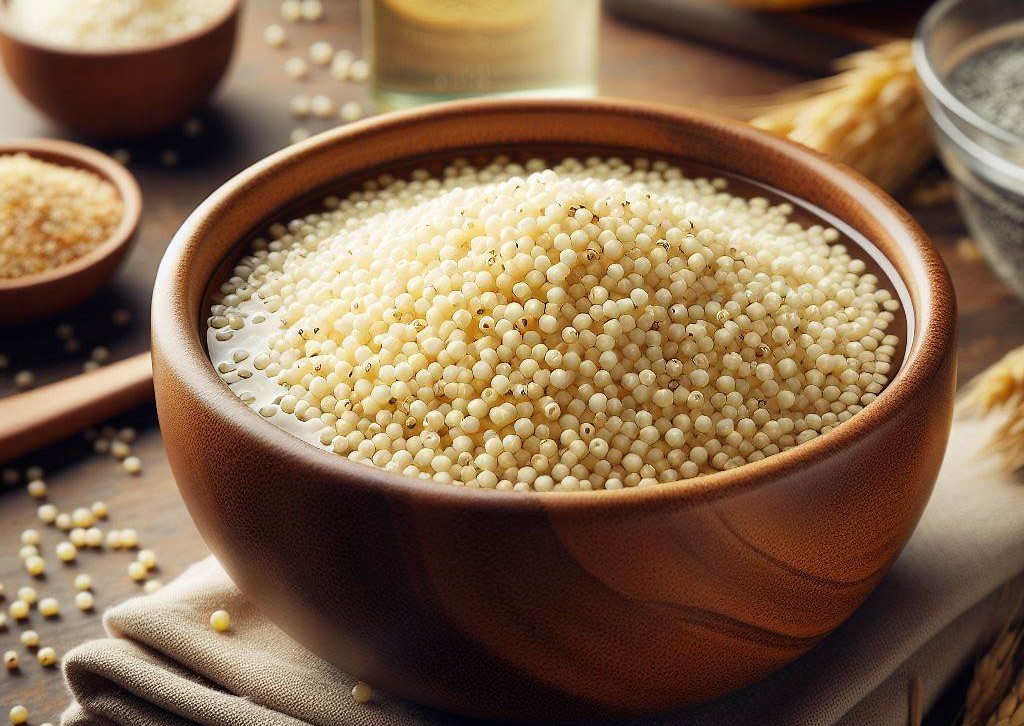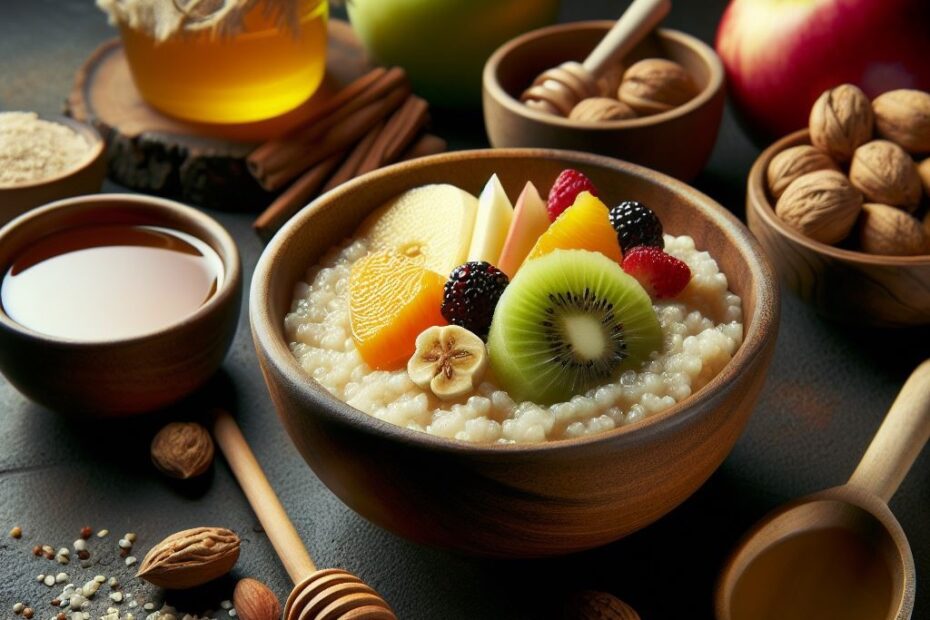What Is Fermented Porridge?
Fermented porridge is a traditional dish enjoyed in various cultures around the world. It involves the fermentation of a mixture typically made with grains, water, and sometimes dairy products.
Fermentation not only imparts a unique flavor but also enhances the nutritional profile of the porridge.
The process of fermentation involves the breakdown of carbohydrates by microorganisms like bacteria and yeast, resulting in a tangy and probiotic-rich dish.
What Are the Traditional Ingredients Used in Fermented Porridge?

1. Millet
Millet is a staple grain used in many traditional fermented porridge recipes. Its mild flavor and nutritional content make it a popular choice. Millet is gluten-free and rich in essential nutrients, making it a wholesome base for the porridge. (If You Need Millet Grains, Buy HERE)
2. Water
Water is a fundamental component in making fermented porridge. It facilitates the soaking and grinding of millet, contributing to the overall consistency of the dish.
3. Salt
Salt not only enhances the flavor of the porridge but also plays a crucial role in the fermentation process. It helps create an environment conducive to the growth of beneficial microorganisms while inhibiting the growth of harmful bacteria.
4. Yogurt or Buttermilk
Yogurt or buttermilk introduces live cultures to the porridge, kickstarting the fermentation process. These dairy products add a creamy texture and tangy flavor to the final dish.
What Are the Steps to Making Fermented Porridge?

1. Soak The Millet
Start by soaking the millet in water for several hours or overnight. This softens the grains and aids in the grinding process.
2. Grind The Millet
After soaking, grind the millet into a smooth paste. The consistency can be adjusted based on personal preference; some prefer a coarse texture, while others opt for a smoother finish.
3. Add Water And Salt
Mix the ground millet with water and salt. The salt not only adds flavor but also helps regulate the fermentation process. Ensure a well-mixed, homogenous blend.
4. Leave The Mixture To Ferment
Transfer the mixture to a clean, airtight container and let it ferment for at least 8–12 hours. The fermentation time may vary depending on the ambient temperature; warmer temperatures generally accelerate the process.
5. Heat The Porridge
After fermentation, heat the porridge on a stove until it reaches the desired temperature. Be cautious not to overheat, as this might kill the beneficial microorganisms.
6. Serve And Enjoy
Once heated, your fermented porridge is ready to be served. It can be enjoyed plain or paired with toppings like fruits, nuts, or honey.
What Are the Health Benefits of Fermented Porridge?
1. Contains Probiotics
The fermentation process introduces probiotics, beneficial bacteria that promote a healthy gut microbiome. Probiotics contribute to digestive health and boost the immune system.
2. Improves Digestion
Fermented porridge is easily digestible, thanks to the pre-digestion of certain components during fermentation. This can be particularly beneficial for individuals with sensitive digestive systems.
3. Rich In Nutrients
Millet is a nutrient-dense grain, and the fermentation process can increase the bioavailability of certain vitamins and minerals, making them easier for the body to absorb.
4. May Help With Weight Loss
The probiotics in fermented porridge may support weight loss by promoting a healthy gut environment. A balanced gut microbiome is associated with improved metabolism and weight management.
Are There Any Risks or Side Effects of Consuming Fermented Porridge?
1. May Cause Bloating
For some individuals, the introduction of probiotics and the fermentation process may initially cause mild bloating. Gradually incorporating fermented foods into the diet can help alleviate this issue.
2. May Contain Harmful Bacteria
While the fermentation process generally creates a safe environment for beneficial bacteria, there is a slight risk of contamination. Ensure proper hygiene and cleanliness during preparation to minimize this risk.
3. May Cause Allergic Reactions
Individuals with allergies to specific grains or dairy products should take caution and choose alternative ingredients to suit their dietary needs.
Conclusion
Making fermented porridge the traditional way involves a simple yet rewarding process that results in a nutritious and probiotic-rich dish. By understanding the traditional ingredients and following the steps carefully, you can enjoy a delicious and healthy addition to your culinary repertoire.
FAQs About Making Fermented Porridge
What is fermented porridge, and why is it considered traditional?
Fermented porridge is a dish made by fermenting a mixture of grains, water, and sometimes dairy products. The fermentation process enhances the flavor and nutritional content of the porridge. It is considered traditional as it has been enjoyed in various cultures around the world for generations.
What are the key ingredients used in making fermented porridge?
The traditional ingredients for fermented porridge include millet (a staple grain), water, salt (for flavor and fermentation regulation), and yogurt or buttermilk (to introduce live cultures and kickstart the fermentation process).
Can I use other grains besides millet to make fermented porridge?
While millet is a common choice, other grains such as sorghum, rice, or oats can also be used. The choice of grain may affect the flavor and texture of the final porridge.
How long does the fermentation process take, and can I adjust the time?
The fermentation process typically takes 8–12 hours, but this may vary based on factors such as ambient temperature. Warmer temperatures can accelerate fermentation. It’s advisable to check the porridge periodically and adjust the time based on the desired level of tanginess.
Are there variations in the consistency of the porridge, and how can I achieve my preferred texture?
Yes, there can be variations in porridge consistency. After grinding the millet, you can choose to leave it coarse or grind it further for a smoother texture. Adjust the water-to-millet ratio to achieve the desired thickness.
What are the potential health benefits and risks of consuming fermented porridge?
Health benefits include the presence of probiotics for gut health, improved digestion, nutrient density, and potential support for weight loss. However, there are also potential risks, including mild bloating during the adjustment period, the slight risk of harmful bacteria contamination (mitigated by proper hygiene), and the possibility of allergic reactions for individuals with specific dietary restrictions.

